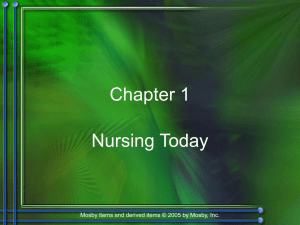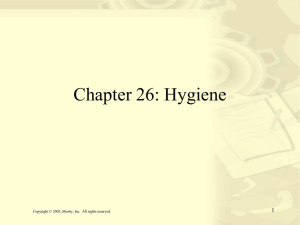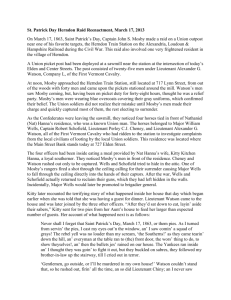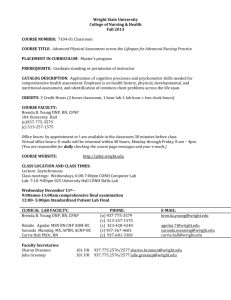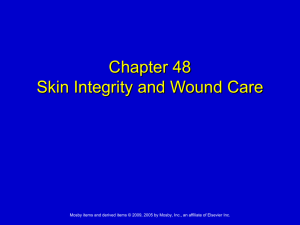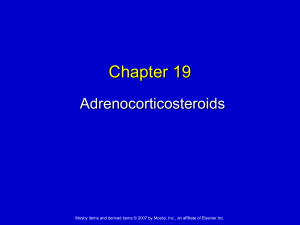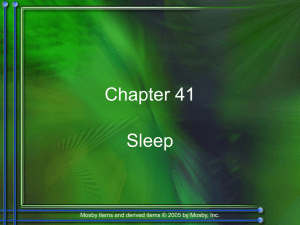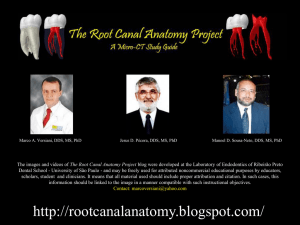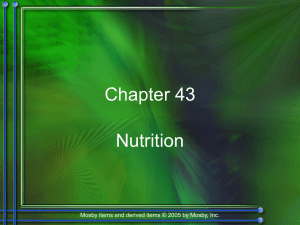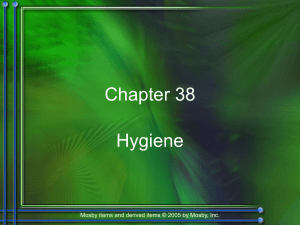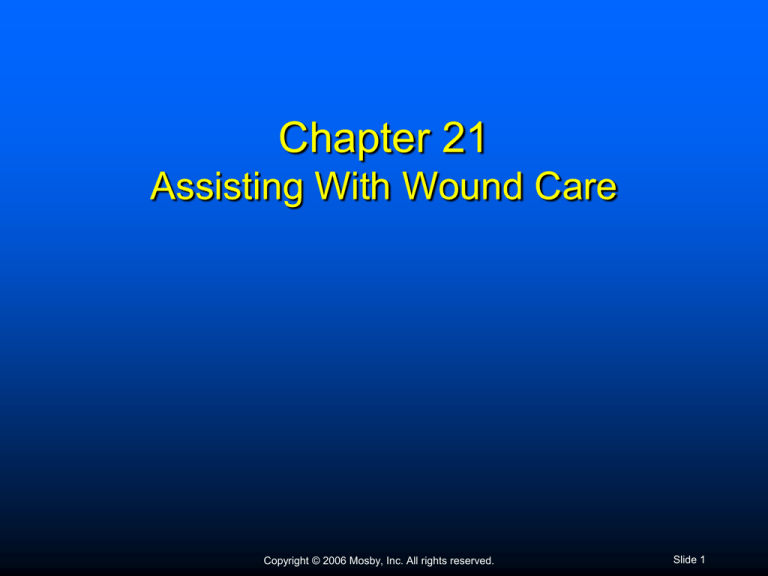
Chapter 21
Assisting With Wound Care
Copyright © 2006 Mosby, Inc. All rights reserved.
Slide 1
A BREAKDOWN OF SKIN TISSUE THAT OCCURS WHEN
BLOOD FLOW TO AN AREA IS INTERRUPTED.
ALSO CALLED A PRESSURE ULCER, PRESSURE SORE,
OR BEDSORE
Copyright © 2006 Mosby, Inc. All rights reserved.
Slide 2
PRESSURE ULCERS
Causes
Pressure, friction, and shearing
Breaks in the skin
Poor circulation to an area
Moisture
Dry skin
Irritation by urine and feces
Age
Friction scrapes the skin.
Copyright © 2006 Mosby, Inc. All rights reserved.
Slide 3
LYING OR SITTING TOO LONG IN ONE POSITION –
CAUSES PRESSURE OVER BONY PROMINENCES
WRINKLES IN CLOTHING OR BED LINEN
POOR NUTRITION
SHEARING – WHEN THE SKIN STICKS TO THE
SURFACE AND THE DEEPER TISSUE MOVE
DOWNWARD (WHEN THE PERSON SLIDES DOWN IN
BED)
Copyright © 2006 Mosby, Inc. All rights reserved.
Slide 4
Signs of pressure ulcers
The first sign is pale skin or a reddened area.
Stages of pressure ulcers
• Stage 1
The skin is red. The color does not return to normal when the
skin is relieved of pressure. The skin is intact.
• Stage 2
The skin cracks, blisters, or peels. There may be a shallow
crater.
• Stage 3
The skin is gone. Underlying tissues are exposed. The exposed
tissue is damaged. There may be drainage from the area.
• Stage 4
Muscle and bone are exposed and damaged. Drainage is likely.
Copyright © 2006 Mosby, Inc. All rights reserved.
Slide 5
IN STAGE 1 THE SKIN IS RED AND MAY BE WARM TO
THE TOUCH.
THE COLOR DOES NOT RETURN TO NORMAL WHEN
THE SKIN IS RELIEVED OF PRESSURE
ON DARK COLORED SKIN THE AREA MAY APPEAR
Slide 6
Copyright
© 2006 Mosby,
Inc. All PURPLISH
rights reserved.
DARK
BLUE
OR
GENTLY MASSAGE OUTSIDE OF THE REDDENED
AREA
KEEP AREA AROUND THE BREAKDOWN CLEAN AND
DRY
RELIEVE ALL PRESSURE OVER THE AFFECTED
AREA
ENCOURAGE NUTRITIOUS DIET AND ADEQUATE
FLUIDS
NURSE MAY APPLY A PROTECTIVE COVERING
Copyright © 2006 Mosby, Inc. All rights reserved.
Slide 7
IN STAGE 2 THE SKIN CRACKS, BLISTERS, OR PEELS.
DESTRUCTION OF THE EPIDERMIS AND PARTIAL
DESTRUCTION OF THE DERMIS
MAY LOOK LIKE AN ABRASION, BLISTER, OR SHALLOW
CRATER
Copyright © 2006 Mosby, Inc. All rights reserved.
Slide 8
REMOVE THE PRESSURE
GENTLY MASSAGE AROUND THE OUTSIDE OF THE
AFFECTED AREA
MAKE SURE YOU NOTIFY THE NURSE
Copyright © 2006 Mosby, Inc. All rights reserved.
Slide 9
IN STAGE 3 THE LAYERS OF SKIN HAVE BEEN
DESTROYED AND A DEEP CRATER HAS FORMED.
YOU MAY SEE MUSCLES AND TENDONS.
Copyright © 2006 Mosby, Inc. All rights reserved.
Slide 10
ASSIST IN KEEPING THE AREA AFFECTED CLEAN
ASSIST WITH DRESSING CHANGES
MAY REQUIRE SURGICAL TREATMENT
ASSIST WITH THE USE OF PRESSURE - RELIEVING
DEVICES ( SPECIALTY MATTRESS, BED, OR
CUSHIONS )
Copyright © 2006 Mosby, Inc. All rights reserved.
Slide 11
A STAGE 4 ULCER HAS DEEP TISSUE INVOLVEMENT
EXPOSING MUSCLE AND BONE
THERE MAY BE TUNNELING OF THE WOUND
Copyright © 2006 Mosby, Inc. All rights reserved.
Slide 12
ASSIST WITH DRESSING CHANGES
MAY REQUIRE SURGICAL TREATMENT
Copyright © 2006 Mosby, Inc. All rights reserved.
Slide 13
SKIN TEARS
Skin tears are caused by:
Friction and shearing
Pulling on the skin
Pressure on the skin
Tell the nurse at once if you cause or find a
skin tear.
Copyright © 2006 Mosby, Inc. All rights reserved.
Slide 14
To prevent skin tears:
Keep the person’s and your fingernails short and
smoothly filed
Do not wear rings or bracelets
Follow the care plan
Follow safety rules to lift, move, position, transfer,
bathe, and dress the person
Prevent shearing and friction
Use an assist device to move the person in bed
Copyright © 2006 Mosby, Inc. All rights reserved.
Slide 15
CIRCULATORY ULCERS
Poor circulation can lead to:
Pain
Open wounds
Swelling of tissues (edema)
Infection and gangrene
• Gangrene is a condition in which tissue dies.
Copyright © 2006 Mosby, Inc. All rights reserved.
Slide 16
Stasis ulcers (venous ulcers)
The heels and inner aspect of the ankles are common
sites.
Arterial ulcers
Are found:
• Between the toes
• On top of the toes
• On the outer side of the ankles
• On the heels for persons on bedrest
These ulcers can occur from shoes that fit poorly.
Copyright © 2006 Mosby, Inc. All rights reserved.
Slide 17
Prevention and treatment
Follow the person’s care plan.
Elastic stockings and elastic bandages promote
circulation.
• Applying elastic stockings (NNAAP)*
• Applying elastic bandages*
Copyright © 2006 Mosby, Inc. All rights reserved.
Slide 18
DRESSINGS
Wound dressings:
Protect wounds from injury and microbes
Absorb drainage
Remove dead tissue
Promote comfort
Provide a moist environment for wound healing
Copyright © 2006 Mosby, Inc. All rights reserved.
Slide 19
Securing dressings
Dressings are secured and held in place by:
• Adhesive tape
• Paper and plastic tape
• Elastic tape
• Montgomery ties
• Binders
Copyright © 2006 Mosby, Inc. All rights reserved.
Slide 20
Applying dry non-sterile dressings*
Meet fluid and elimination needs before you begin.
Collect needed equipment and supplies.
Control your nonverbal communication.
Remove dressings so the person cannot see the
soiled side.
Do not force the person to look at the wound.
Remove tape by pulling it toward the wound.
Remove dressings gently.
Report and record your observations.
Copyright © 2006 Mosby, Inc. All rights reserved.
Slide 21
BINDERS
Binders promote healing by:
Supporting wounds and holding dressings in place
Reducing or preventing swelling
Promoting comfort
Preventing injury
Types of binders
Straight abdominal binders
Breast binders
T-binders
Copyright © 2006 Mosby, Inc. All rights reserved.
Slide 22
HEAT AND COLD APPLICATIONS
Heat and cold applications
Promote healing and comfort
Reduce tissue swelling
Heat applications
Heat applications are often used:
• For musculoskeletal injuries or problems
• To relieve pain, relax muscles, and decrease joint stiffness
• To promote healing and reduce tissue swelling
High temperatures can cause burns.
Copyright © 2006 Mosby, Inc. All rights reserved.
Slide 23
Persons at risk for complications are:
• Older and fair-skinned people
• Persons with problems sensing heat or pain
• Persons with dementia
• Persons with metal implants
Moist and dry heat applications.
Copyright © 2006 Mosby, Inc. All rights reserved.
Slide 24
Cold applications
Reduce pain
Prevent swelling
Decrease circulation and bleeding
Complications include pain, burns, and blisters.
Persons at risk for complications include:
• Older and fair-skinned persons
• Persons with mental or sensory impairments
Moist and Dry cold applications
Copyright © 2006 Mosby, Inc. All rights reserved.
Slide 25



